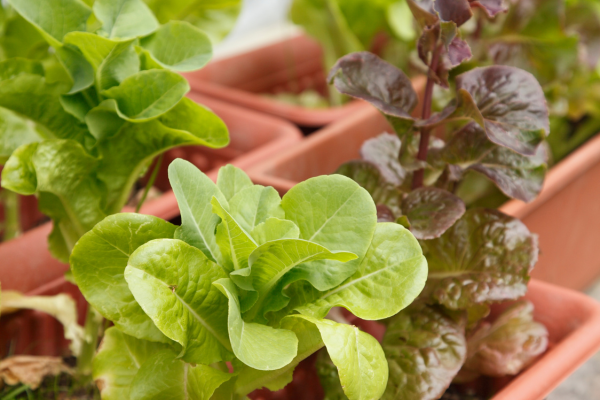Growing your own vegetables doesn’t require a backyard or garden bed. With the right containers, soil, and care, you can cultivate a productive vegetable garden right on your balcony, patio, or even windowsill. Whether you live in an apartment or simply want a more manageable gardening option, this guide will help you grow fresh, healthy vegetables in pots—no matter how small your space.
In this in-depth guide, we’ll walk you through everything a beginner needs to know to get started.
Why Grow Vegetables in Pots?
Container vegetable gardening has many advantages:
- Space-efficient: Perfect for urban environments or limited outdoor space.
- Portable: Move pots to chase sunlight or protect from harsh weather.
- Easier pest control: Raised pots can help avoid common soil-borne pests.
- Custom soil: Tailor the mix to exactly what your plants need.
- Ideal for beginners: Start small and scale up as you learn.
Best Vegetables to Grow in Pots
Not all vegetables do well in containers, but many thrive with the right care. Here are top choices:
Leafy Greens
- Lettuce: Quick-growing and needs only shallow pots.
- Spinach: Cool-weather crop with high yield.
- Kale: Hardy and grows well in pots 8–12 inches deep.
Herbs (vegetable companions)
- Parsley, cilantro, basil: Essential for seasoning and easy to grow.
Root Vegetables
- Radishes: Grow fast and don’t need deep soil.
- Carrots: Choose short or round varieties like ‘Parisian’ or ‘Thumbelina’.
- Beets: Grow both roots and greens.
Fruiting Vegetables
- Cherry tomatoes: Dwarf or bush varieties are best.
- Peppers: Bell and chili peppers thrive in warm, sunny spots.
- Bush beans: Compact and productive.
Others
- Green onions: Great for shallow containers.
- Zucchini (dwarf type): One plant per large pot.
Choosing the Right Containers
Size matters when it comes to growing vegetables in pots.
| Vegetable Type | Pot Depth | Pot Width |
|---|---|---|
| Leafy greens | 6–8 inches | 10–12 inches |
| Tomatoes & peppers | 12–18 inches | 12–24 inches |
| Carrots/radishes | 8–12 inches | 10–12 inches |
| Beans | 8–12 inches | 12+ inches |
Tips:
- Use pots with drainage holes.
- Plastic is lightweight and holds moisture well.
- Terracotta breathes well but dries out faster.
- Fabric grow bags are great for root veggies and easy to move.
Choosing the Right Soil
Don’t use garden soil—it’s heavy and may contain pests or diseases.
Use:
- Potting mix: Light, airy, and well-draining.
- Compost: Enriches the soil and boosts nutrients.
- Perlite or vermiculite: Helps with drainage and aeration.
Mix ratio example:
- 60% potting soil
- 30% compost
- 10% perlite
Where to Place Your Pots
Sunlight is essential for vegetable growth. Most vegetables need:
- 6–8 hours of direct sunlight daily.
- Use a south-facing balcony, window, or patio if possible.
If natural light is limited:
- Use LED grow lights for indoor setups.
- Rotate pots weekly for even light exposure.
Wind protection: Use railings, screens, or taller plants as windbreaks if you’re in a high-rise area.
Watering Your Vegetable Pots
Container plants dry out faster than ground-planted ones.
Watering tips:
- Check moisture daily by touching the soil.
- Water deeply until it runs out of the bottom.
- Use a watering can with a long spout or a drip irrigation system for consistency.
Mulch (like straw or wood chips) helps retain moisture and keep roots cool.
Feeding Your Plants
Potted vegetables need regular feeding due to nutrient depletion from watering.
Options:
- Slow-release granules: Mix into soil at planting.
- Liquid fertilizer: Use every 2–3 weeks during growing season.
- Compost tea: Organic and safe for all stages.
Look for fertilizers high in nitrogen for leafy crops and balanced (like 10-10-10) for fruiting vegetables.
Vertical Gardening and Companion Planting
Short on space? Grow upwards instead of out.
Vertical ideas:
- Trellises for peas or beans
- Hanging baskets for cherry tomatoes
- Stackable planters for herbs and greens
Companion planting:
Pair compatible vegetables together in the same pot:
- Tomatoes + basil
- Carrots + lettuce
- Beans + kale
Avoid overcrowding, but smart pairings can save space and boost yield.
Common Problems and How to Avoid Them
Yellowing leaves?
- Could be overwatering or lack of nutrients.
Small or slow-growing plants?
- Check light levels or soil fertility.
Pests?
- Use neem oil spray or insecticidal soap.
- Elevate pots off the ground to avoid crawling pests.
Leggy seedlings?
- Not enough light—move to sunnier location or use grow light.
Seasonal Tips for Success
Spring
- Start cool-season crops: spinach, lettuce, radishes.
- Gradually harden off plants before placing outside.
Summer
- Ideal for tomatoes, peppers, beans.
- Water more frequently due to heat.
Fall
- Replant greens like kale, chard.
- Shorter daylight = slower growth.
Winter
- Grow indoors or cover with mini greenhouse if outdoors.
- Focus on herbs and microgreens indoors.
Harvesting Your Container Veggies
Harvesting encourages more growth. Follow these tips:
- Pick greens like lettuce by cutting outer leaves, leaving the center to regrow.
- Harvest root crops (carrots, radishes) when they reach the right size.
- Pick tomatoes and peppers when fully colored and firm.
Harvest in the morning when plants are most hydrated.
Final Thoughts: Grow Big in Small Spaces
Growing vegetables in pots proves that you don’t need a farm—or even a backyard—to eat what you grow. With the right containers, soil, and care, you can cultivate a productive and beautiful mini-garden right on your balcony or windowsill.
Start with easy crops like lettuce, radishes, and cherry tomatoes. Experiment with layouts, learn from trial and error, and celebrate every harvest—no matter how small.
Whether you’re growing one pot or twenty, you’re taking a powerful step toward sustainability, health, and a deeper connection with nature—right outside your door.
